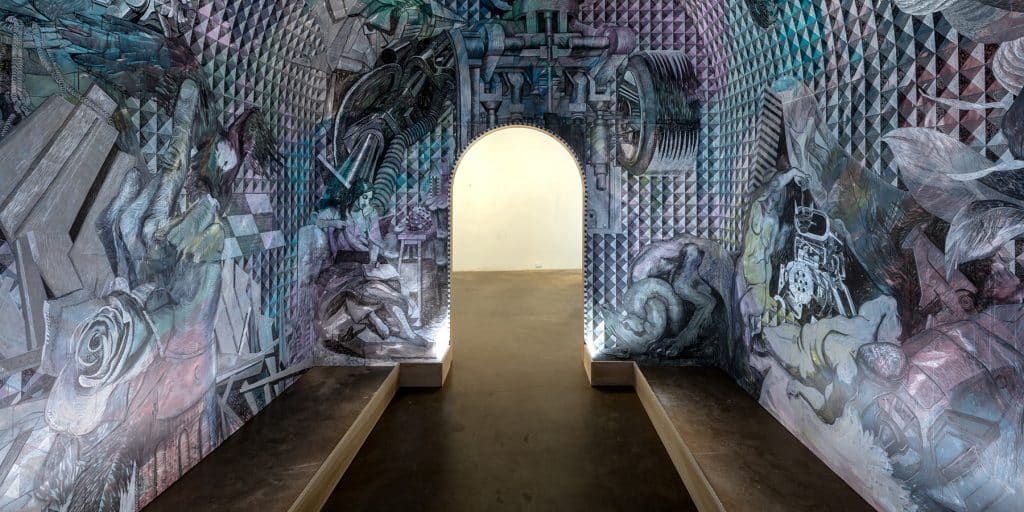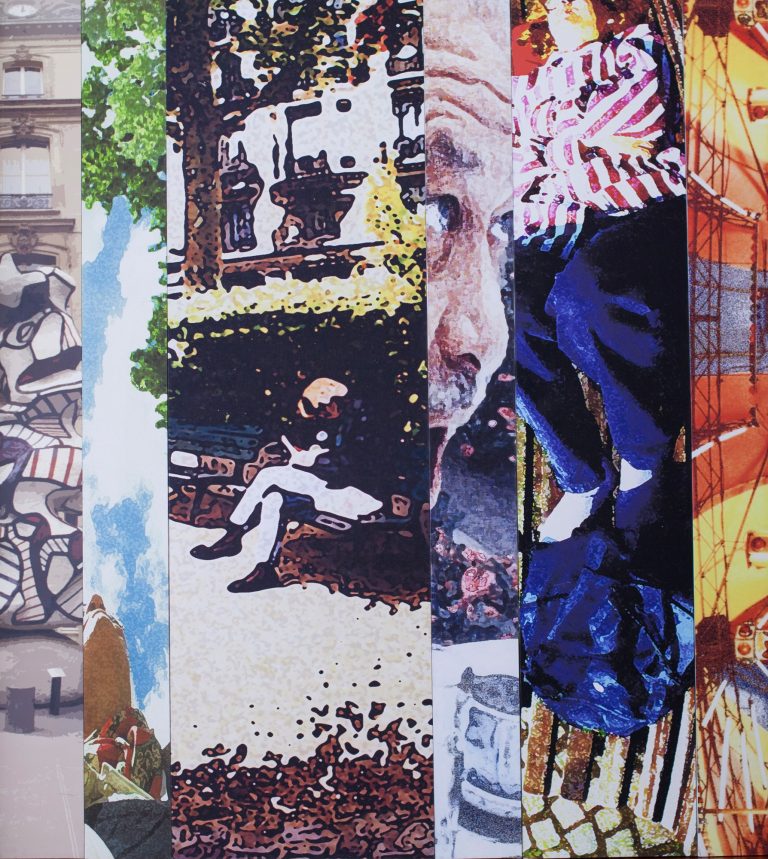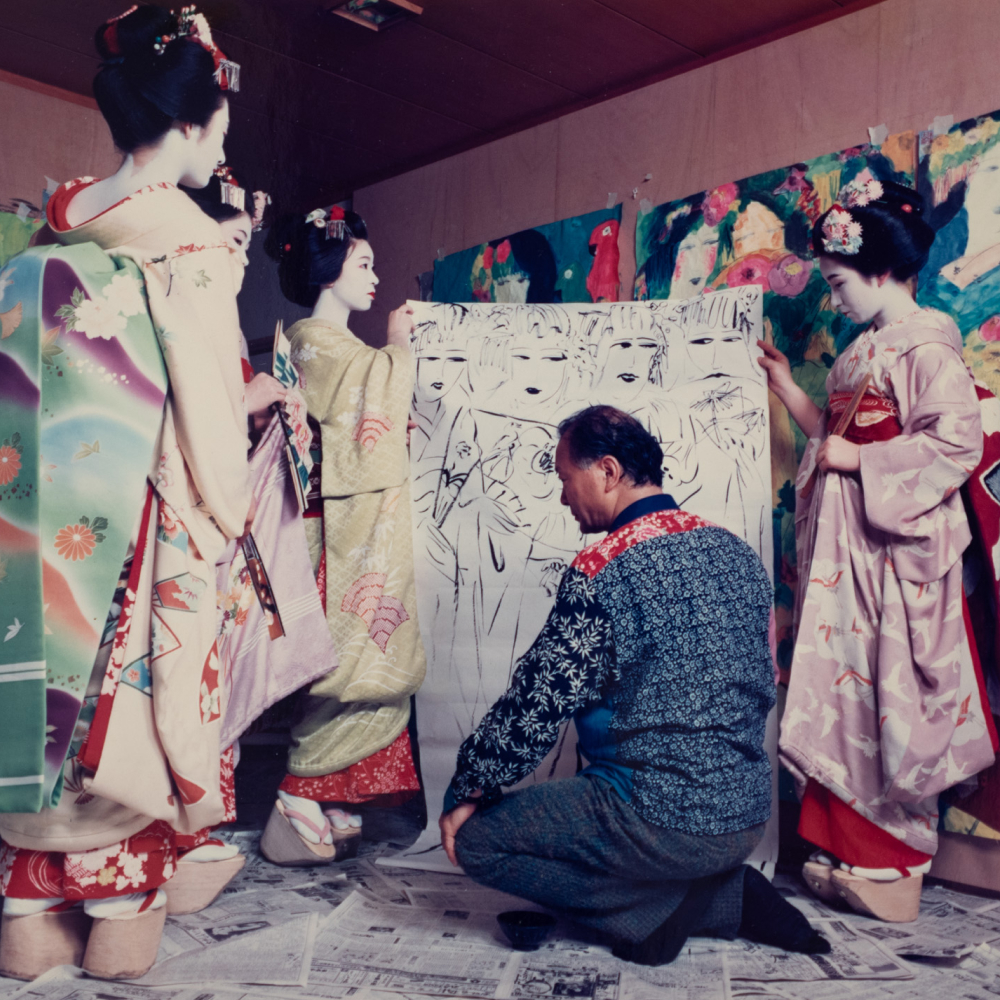February 3, 2019The Texas landscape was transformed by the booming oil and gas industry in the mid-20th century. But pumpjacks and derricks were not the only markers of change. As cities like Houston and Dallas expanded around the newfound wealth, so did the presence of art, and some pioneering, culturally minded philanthropic industrialists and entrepreneurs recognized that a great painting or sculpture could lift the human spirit, no matter where. Thanks to collectors like Houston’s Jean and Dominique de Menil — European transplants in the oil-services industry who founded the legendary Menil Collection (and commissioned such jewels of modern art as the Rothko Chapel, in 1964) — and Dallas real estate magnate Raymond Nasher, among others, Texas’s two largest cities have become thriving cultural communities full of artists, dealers and collectors.
The momentum remains strong in both cities, as witness last November’s opening of the Menil Collection’s long-awaited Drawing Institute, a 30,000-square-foot stand-alone building devoted to the research and study of modern and contemporary drawings — the only such center in the world — designed by Los Angeles–based architectural firm Johnston Marklee. “Because Houston is the nexus for the oil and gas industry in the U.S., people come here to work from all over the world, and engaging in the cultural life of the city is what they do for entertainment. We don’t have any nearby mountains to climb!” says Kerry Inman, who has watched her state’s arts community transform since opening Inman Gallery in 1990.
Here, we take a look at how Inman and a handful of other top Texas dealers are engaging and entertaining art lovers the world over
Erin Cluley Gallery

Installation view of Hidenori Ishii’s “The Black Lake” exhibition at Erin Cluley Gallery. Photo courtesy of Erin Cluley. Top: Francisco Moreno Chapel interior at Erin Cluley Gallery.
A former exhibitions director at Dallas Contemporary, one of the city’s best not-for-profit spaces, Texas native Erin Cluley founded her eponymous commercial gallery in 2014. Taking a leap of faith, she opened it in Trinity Groves, in West Dallas, away from the gallery fray. Although that industrial space has served her well, this spring she’s relocating to a new development in the Design District, closer to her peers. “Trinity Groves has allowed me to stand apart and grow the business,” she says. “But this will be slightly more sophisticated, and I’ll have great neighbors.”
Erin Cluley Gallery’s new location will have two display areas, so that it can show work by international artists as well as local talent. “Collectors like to have a relationship with the artist and visit studios and so on, and for that reason I do get a good response when I’m showing regional artists,” Cluley says. She recently placed a major installation by one of her rising stars, Mexican-born, Dallas-based Francisco Moreno, in the collection of the Dallas Museum of Art. Titled Chapel, 2018, the work resembles a small barrel-vaulted chapel made from plywood, which Moreno has described as a subtle homage to Donald Judd. But its interior is painted with exquisite, elaborate, psychedelic evangelical scenes inspired by murals he saw at the Prado Museum, in Madrid. “It’s a dream!” Cluley says of its acquisition by the Dallas Museum of Art.
PDNB Gallery

Interior view of PDNB Gallery. Photo by Don Netzer
Burt and Missy Finger began dealing in photographs privately in the 1990s after collecting classic vintage prints for several years. “We got to the point where we had so many photos that we decided to start selling them,” recalls Burt, who counts Diane Arbus and André Kertész among the artists in their collection. “They were relatively inexpensive then.” The Fingers opened a gallery in the Uptown area of Dallas in 1995, when “photography was a scarce commodity and people were not used to buying it, nor did they value it,” says Burt, who dealt in vintage watches before transitioning to photography. The couple have since moved to the Design District, across from Dallas Contemporary.
PDNB Gallery — which stands for Photos: Do Not Bend, a name the couple derived from a stamp they imprinted on makeshift business cards when they’d just started and had no moniker — spent several years introducing local and national collectors to the value of fine-art photographs. Then, it struck a chord with its first exhibition of Keith Carter’s pristine black-and-white images of his native East Texas. Now well-established, Carter is one of dozens of photographers on the gallery’s roster, which includes such international vintage greats as Elliott Erwitt and Nikolas Muray, as well as more experimental photo-based artists, like Cheryl Medow.
On view at the gallery through March 2 is group show of images of houses, from the shots of rundown Baltimore and Philadelphia domiciles taken by German photographer Ben Marcin, to prints of 1970s California suburbia by Bill Owens, to pictures of houses raised on cinder blocks above the Atlantic on the Jersey Shore by Ira Wagner. “It’s a very popular topic,” says Burt.
Although the Fingers take their photographic research seriously, they don’t hesitate to break from convention, and have a laugh while doing so. Burt’s favorite show so far, he says, was “Pictures of Me,” a selection of portraits of the dealer taken by a multitude of photographers over the years. “Half my colleagues thought I was crazy,” he says. “But some people are traditionalists, and some like to break the rules.”
Ro2 Art

Dream Catcher, 2018, by Angel Cabrales. Photo courtesy of Ro2 Art
When Susan Roth Romans and her son, Jordan Roth, launched Ro2 Art, in 2010, they were not intending to have a full gallery program in one location. But since then, Ro2 Art has become a permanent fixture in the Dallas contemporary-art scene and a go-to spot to find hot local talent (around 60 percent of Ro2’s artists are from the North Texas region). “The idea, at the time, was to do a satellite event near the Dallas Art Fair, which was in its second year,” says Roth. They invited local dealers to participate and ended up organizing two satellite shows, one of which was next to Neiman Marcus. The shows were popular, and the luxury giant asked them to stay. “That rolled into a pop-up space, and then another,” says Roth. Since 2015, the gallery has called the Cedars arts district home.
Romans and Roth continue to organize shows in pop-up spaces, as well as run an ongoing exhibition program at the Magnolia Theater, a local independent house with a steady stream of visitors. “Around one thousand people might go through there in a month” says Roth. They try to present work — usually photo-based — that will resonate with a large crowd, such as Dallas-based artist Cathey Miller’s sci-fi movie posters, reimagined with women in the lead roles. At the end of January, Ro2 Art’s pop-up presented work by local sculptor Angel Cabrallas, who makes satirical political pieces that, in this case, will address issues surrounding the Texas-Mexico border. Currently on view in the gallery is work by sculptor Justin W. Archer and painter Aimee Cardoso. Archer, who lives and teaches in North Texas, mixes high and low tech, merging 3-D scans with traditional carving to create uncanny everyday objects that seem altered by an unseen digital force. Cardoso, meanwhile, paints sumptuous details of Old Master pictures, seen at close range, in oil.
“Once you find your niche and they find you, it becomes an environment where you can flourish,” Jordan says of Dallas. “The city attracts artists, and there are a lot of people who move here from all parts of the country. Our end of the market attracts younger collectors, and we have a fair number of young professionals here. Plus, the geographical location is amazing: There are always people traveling to and from Dallas.”
Decorazon Gallery

Leaner Set #3842, 2017, by David E. Peterson. Photo courtesy of Decorazon Gallery
When Hugo Garcia Urrutia started Decorazon Gallery, in 2004, he was looking for the right setting to showcase local talent as well as his own work. He and his partner, MK Semos, who also happens to be his wife, found a space in the Dallas neighborhood of Oak Cliff, known for its abundance of artist’s studios. “I like bringing the architecture and design aspect to the art world,” says Garcia Urrutia, whose undulating abstract wood carvings certainly fit into that category. Adds Semos, “We are both passionate about design, but I lean more toward the painterly.” The combination has made for an expansive and diverse contemporary-art program.
“We love traveling and finding new artists and clients and meeting new dealers to collaborate with,” says Semos. The couple have a by-appointment space in London and will soon be turning their attention toward New York, where this month, they’re launching a space at 1stdibs’ new gallery in West Chelsea. “It will help us give all of our artists more exposure,” says Garcia Urrutia. They plan to inaugurate the space with what they call “Decorazon favorites,” including a large canvas by Russian-born figurative painter Ekaterina Popova, Guillaume Cornet’s highly detailed cityscape illustrations and several wood plank abstractions by David Peterson.
Galleri Urbane

Installation view of works at Donald Martiny’s “Epistrophy” show at Galleri Urbane. Photo courtesy of Galleri Urbane
“When I do art fairs, people are like, ‘Oh, Texas.’ But there are really savvy collectors here,” says Ree Willaford, who runs Galleri Urbane with her husband, artist Jason Willaford. The couple has helped nurture those collectors with a challenging and adventurous program of work by contemporary artists across media, like Liss Lafleur, whose delicate blown-glass objects offer a cultural critique as well as a highly aesthetic experience, and Stephen D’Onofrio, whose paintings explore mass-produced objects and concepts with a Pop sensibility.
Galleri Urbane began in the late 1990s in Silver City, New Mexico, where the Willafords had arrived, somewhat by chance, after traveling by motorcycle for thousands of miles. “I had read the biography of Georgia O’Keeffe, and I always had a dream of living in New Mexico, but didn’t know where. Everywhere felt done,” says Ree, who originally hails from California (Jason is from Florida). To exhibit Jason’s edgy abstractions, they cleared out the front rooms of their Victorian home in the town. The photographer Michael Berman came to one of their openings and told them that if they started a gallery, he’d show with them. They did, and he still does.
In the early 2000s, the couple started organizing pop-up shows in Marfa, Texas, renting a space for $500 during the Chinati Foundation’s open house weekends. “We called all our artists and loaded up a trailer, and everyone thought we were crazy,” recalls Ree. By 2003, they had moved to Marfa, where they stayed until 2009.
They relocated to Dallas, says Ree, in part because their daughter wanted to attend a music high school there but also because the art scene felt right. “It was instinct. Dallas was starting to come into its own as the contemporary-art market was building,” she says. They picked a spot that was on the outskirts of the Design District at the time but is now squarely within it, as that neighborhood has expanded with the city’s growing cultural presence.
Hiram Butler Gallery

Installation view of Matt Kleberg’s drawings at Hiram Butler Gallery. Photo courtesy of Hiram Butler Gallery
Postwar and contemporary dealer Hiram Butler has been instrumental in bringing prestige and gravitas to Houston’s art scene since he first opened his doors, in 1984. Over the years, he’s worked with trailblazing light and space artist James Turrell longer than any other dealer in the world, starting with his prints and drawings in the 1980s, and then working together with Turrell and collectors and institutions to get his ethereal light installations built. The artist’s Live Oak Meeting House, 2000 — a Quaker house of worship and Houston landmark — is just one of numerous works the dealer initiated and produced.
Butler was also instrumental in commissioning and building Ellsworth Kelly’s Austin, a chapel designed by the late artist and erected on the campus of UT Austin last year, as well as Jennifer Bartlett’s stained-glass windows for a church in Houston.
“From the start, it’s been an extraordinarily supportive community for art and artists,” the fifth-generation Texan says of Houston’s art scene. “It’s an absolute meritocracy. If you work hard and give back, it is completely embracing.” His gallery frequently collaborates with the city’s institutions, and Butler is currently working on two projects related to Jasper Johns, one with the new Menil Drawing Institute and another with the Museum of Fine Arts Houston.
While the gallery is a go-to destination for some of the 20th century’s greats, it is also firmly embedded in the contemporary scene and dedicated to nurturing Texas artists. Its current exhibition, “Voyeur of the Mundane,” on view through March 30, spotlights the work of five artists based in the Dallas/Fort Worth area: Julie Bozzi, Steve Dennie, Vernon Fisher, Nic Nicosia and Allison V. Smith.
Inman Gallery

A Darkling Plain, installation view, 2009, by Katrina Moorhead. Photo courtesy of Inman Gallery
One of the first artists Kerry Inman approached when she was thinking about starting a gallery in Houston, in 1989, was the landscape painter Kristin Musgnug. “She has a sense of the animism of the land, in a very non-clichéd way,” says the gallerist. It makes sense that Inman is drawn to work that addresses nature in complex ways. At that time, and until three years ago, in fact, she was working as a geologist. She had double majored in studio art and geology in college, then earned her master’s in geosciences, and felt that reconnecting with her art roots might make the city feel more like home. “I met a few people in the CORE residency program at the Museum of Fine Arts, and I started visiting studios and was completely taken with the artists who were in residence there. After finding that most of them did not have gallery representation, I decided to think about opening a space, to showcase some of these artists’ work,” she recalls.
Since then, Inman Gallery has won prestigious awards and increased its profile. And Inman, who sits on the board of the Contemporary Art Museum Houston, continues to sing the praises of the MFA CORE program. Mixed-media installation artist Katrina Moorhead came from Northern Ireland to the program and stayed in the city. “She’s a perfect example of why Houston is so exciting,” says Inman, who is drawn to artists like Moorhead, who put a lot of thought into their materials. “That’s another connection to my background,” she explains. “A geologist is connected to the land, the earth, materials, cultural history, natural history — those are very through lines in our program.”
Barbara Davis Gallery

An installation view of Judy Ledgerwood’s “Refrain” exhibition at Barbara Davis Gallery. Photo courtesy of Barbara Davis Gallery
A pioneer of the Houston gallery scene, Barbara Davis launched her gallery in 1981, when things were just starting to percolate in the city, thanks to collectors like the Menils. Sensing that Houstonians might be ready to plunge into more challenging work, Davis organized shows by such cutting-edge artists as Joseph Beuys, Kiki Smith and Jonathan Borofsky. “They didn’t know what to think about Beuys,” she says with a laugh, remembering the reactions to the prankster German conceptual artist. Fortunately for the dealer, educating collectors is one of her favorite parts about her métier. “Everyone has to start somewhere,” says Davis, whose career embodies that adage. Her gallery was a founding tenant of Houston’s first cluster of serious galleries, Colquitt Gallery Row, and she was the first dealer from Texas to participate in Art Basel Miami Beach.
Davis’s biggest thrill, she says, “is finding artists and nurturing their careers.” Houston is a good spot to do so. In the late 1990s, she was one of the first dealers to show the work of (now) international superstars Shahzia Sikander and Julie Mehretu, whose work she spotted while they were participating in the MFA’s CORE residency program. Davis’s roster often includes emerging local talent, as well as artists she has handpicked from abroad, like Italian multimedia artist Andrea Bianconi.
Davis also takes pleasure in bringing important mid-career artists to Texas. She’s currently showing work by Chicago painter Judy Ledgerwood, whose wonderfully juicy, thickly painted colorful abstractions came out of the Pattern and Decoration movement but feel far more tactile, sensuous and feminist. Later this month, Davis will be presenting colorful abstractions by London painter Danny Rolph, whose work, like that of Ledgerwood, can be found in major private and public collections around the world.
Jen Mauldin Gallery

The Horse, 2017, by Hobbes Vincent. Photo courtesy of Jen Mauldin Gallery
Tasked this past fall with filling the new art-focused Canvas Hotel in Dallas with work by local talent, private dealer and interior designer Jen Mauldin didn’t have to search for long. “I love finding great local artists, and the majority of those I’ve shown over the years are from the Dallas/Fort Worth area,” she says. In this category is Hobbes Vincent, a self-taught sculptor whose 14-foot-high horse drew crowds to Mauldin’s gallery in the Bishop Arts District. Although she has since shuttered that space, her hands are full curating the Canvas Hotel’s rotating exhibitions with MK Semos, of Decorazon. The hotel’s opening exhibition features pieces by Vincent and colorful abstract paintings by Danny Joe Rose III, along with work by other artists.
Semos Mauldin, the art-consultancy firm the two founded this past fall, specializes in hospitality spaces, but Mauldin still hopes to have her own art space again. “I’d like to do something more experiential, maybe with food or music too,” she says. “Dallas loves underground.”


